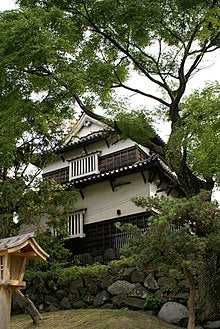
Kuroda Clan
Share
The Kuroda clan (黒田氏, Kuroda-shi) is a Japanese clan that becomes important in the Sengoku period.
Kuroda Clan Origins

The Kuroda clan traces its origins to the province of Tōtōmi.
Kuroda Clan in Sengoku period
In the 16th century, the Kuroda clan was located in Harima province. Under the leadership of Kuroda Yoshitaka, it serves the Oda clan and later the Toyotomi clan. Yoshitaka specifically serves as a battle tactician, and is considered the equal of Takenaka Shigeharu, another leading tactician of the time.
For his services, Yoshitaka was appointed governor of Nakatsu Castle in 15871. Yoshitaka is also a catholic (kirishitan) whose baptismal name is "Don Simeon".
Kuroda Clan in Edo period
At the battle of Sekigahara in 1600, Ieyasu's eastern army defeated Ishida Mitsunari's western army and Ieyasu became the dominant political figure in Japan.
Kuroda Yoshitaka and his son Nagamasa supported Ieyasu in battle, and were rewarded with a transfer to the Fukuoka estate worth 520,000 koku of land.
Two branches of the family were founded in 1623. The third son of Kuroda Nagamasa, Nagaoki, founded the first one. He received 50 000 koku of land which became the domain of Akizuki.
The fourth son of Nagamasa founded the second one. He in turn receives 40,000 koku of land that will become the domain of Tōren-ji.
Kuroda clan forces from Fukuoka take part in the Shimabara rebellion in 1638. The 18,000 men under the command of Kuroda Tadayuki help in the siege of Hara Castle.
In 1784, two schools were established for the children of the samurai of the Fukuoka domain, Shūyū-kan and Kantō-kan. Of the two, Shūyū-kan still exists under the name "Shūyū-kan Prefectural High School."
Kuroda Clan in Boshin War
During the Boshin War of 1868-1869, the Kuroda clan supported the imperial government. Fukuoka troops took part in the battles of Aizu and Hakodate among others.

